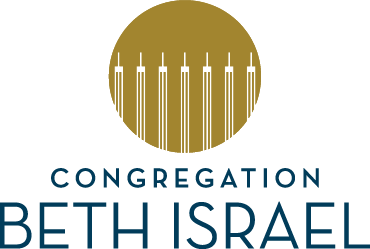“Do you Swivel?”

“Do you Swivel?”
From the desk of Rabbi David Lyon
Judaism and technology sound like contrary ideas. Judaism is four thousand years old and technology is modern and cutting-edge. But I would argue that they’re nearly one and the same. Granted, I open the Torah on Shabbat and read from a scroll inscribed by hand that takes a year to complete with a quill dipped in handmade ink. It is, without a doubt, low-tech by our standards; but, in its day it was an answer to a technological question, namely, how to preserve the words that God inspired to be written.
Subsequent Torah commentaries were preserved, too, but they began as an oral tradition. When the Temple in Jerusalem was destroyed by Roman legions in 70CE, it was feared that the oral tradition needed to be written down or it would be lost forever. The Mishnah (from the Hebrew to repeat) was committed to writing in the 3rd century CE. There were concerns that such an Oral Torah, now committed to writing, would usurp the authority of the written Torah, but it was an unfounded fear. In the 5th century, the Babylonian Talmud was the result of Mishnah plus additional commentary, and ever since commentaries have been accumulated with appropriate measures of authority in every generation including our own.
In the 16th century, the Gutenberg press answered a similar technological question about preserving and distributing the word of God. Gutenberg wasn’t publishing Torah books, but his invention wasn’t lost on Jews who wished to create sacred books for worship and education in their own communities. In the 21st century, technology has developed at a faster rate than in any other time. Now as then, Judaism has benefited from modern technology. We have preserved and distributed Jewish learning on the internet even as we read from the Torah scroll and livestream worship services.
On Thursday morning, I stood on the bimah in the Gordon Chapel to lead The Shlenker School’s Torah service. The students weren’t in the room, but we were connected using technology called Swivel. With a device attached to my lapel, the Swivel camera, set up on a tripod in front of me, followed me as I moved from the pulpit to the Holy Ark. When I took the Torah to the pulpit to read, the camera followed me automatically, the students heard me speak and saw me on their laptop screens. It was as personal as we could get and very meaningful for all of us. Amazingly, when a Torah scribe (sofer) comes to check the Torah for wear-and-tear, he unrolls the scroll to reveal each column. On top of the column he places a computer scanner that reads and detects any error, faded letter, or missing ink. The result leads the scribe to the precise locations where the Torah needs repair.
The pandemic, though destructive and difficult, has accelerated the pace of adaptation of technology. Young and old, alike, are upgrading their devices to be sure to remain connected. In the future, much of this technology will remain in place for those who can’t enter the building and prefer to remain safe at home when mobility is a challenge.
The question, how to preserve the words that God inspired to be written, will be asked and answered in every generation. Modern technology is not inconsistent with the age-old questions that God’s inspired words continue to mean to us. Just because we open a scroll doesn’t mean that the words mean less. In fact, their enduring meaning reveal their intrinsic sacredness. Technology hasn’t replaced the meaning of the words on the parchment inked by hand; rather, technology has preserved them and, by extension, preserved us.
As Shabbat begins, turn on your devices to Facetime, Zoom and Swivel. It’s not a new dance; it’s a sign of our times. From my family to yours, Shabbat Shalom.
Shabbat Shalom,
![]()
